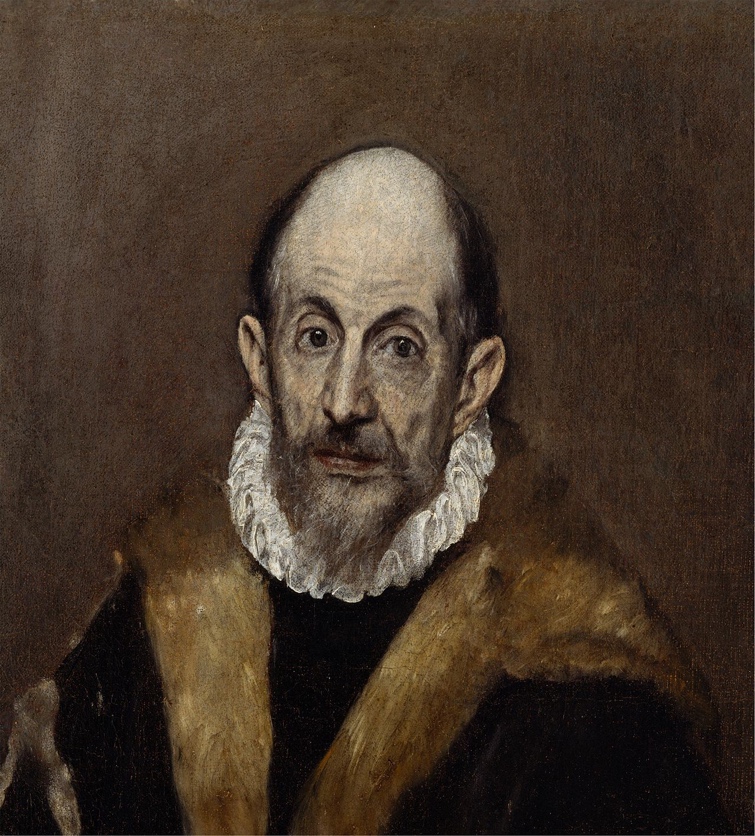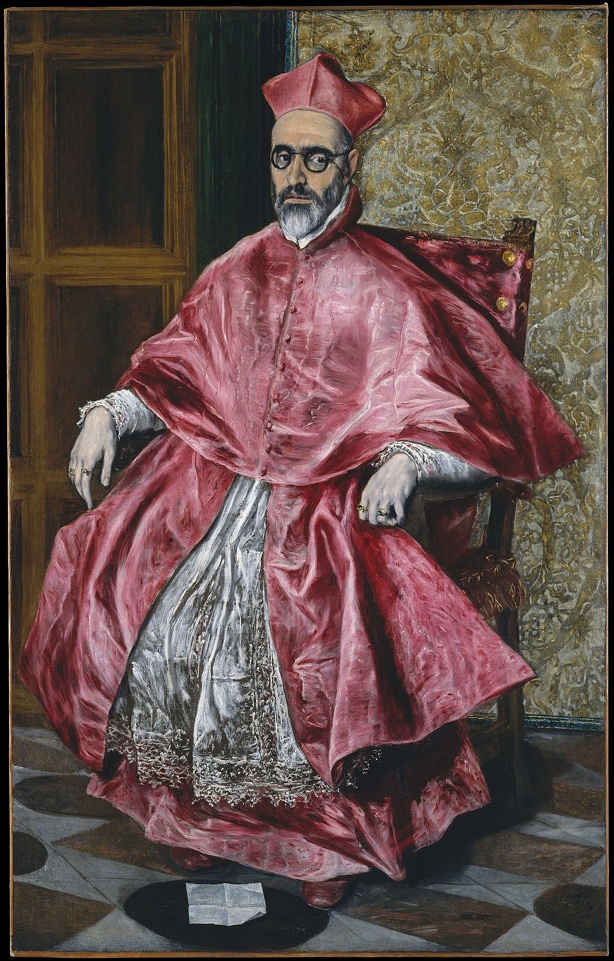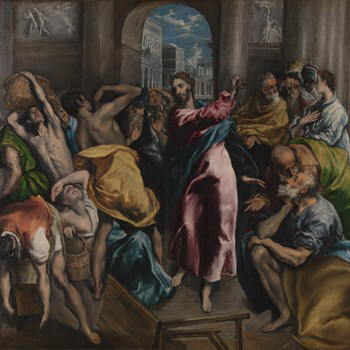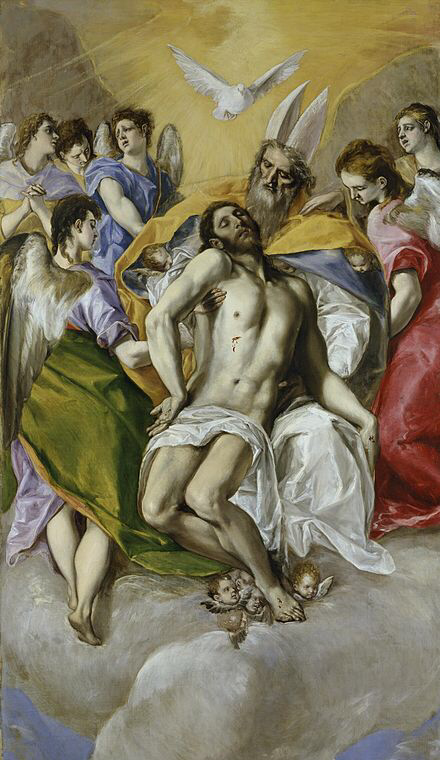El Greco
Cardinal Fernando Niño de Guevara is on display in the Coop car park, opposite Mary Janes

ca. 1595–1600
El Greco self portrait
1541 – 1614
Domenikos Theotokopoulos, known as El Greco, ‘The Greek’, was born in Crete, which was ruled at the time by Venice. El Greco trained in Venice, where he developed his intense, colourful Mannerist style.
Mannerist is a term widely used to describe a type of art of 16th-century Europe, first produced in Italy. It was then exported to other parts of the continent. It was highly finished and stylised.
Mannerist work is often figurative and includes idealisation of the human form, quite often using Michelangelo as an influence. The unnatural colour is a feature of Mannerism and used as a way of making the work more decorative and expressive.
By 1577 El Greco had settled in Toledo, Spain, where he lived the rest of his life. Most of his works were commissioned by local religious foundations.
El Greco was also active as an accomplished painter of portraits. In Venice, El Greco worked under Titian. He was in Rome in 1570 and studied the work of Michelangelo and Raphael. As a native of Crete he was deeply influenced by Byzantine art.
The commission of Portrait of Fernando Niño de Guevara, The Cardinal, likely occurred in the spring of 1600, when the Cardinal was visiting Toledo for several weeks. It is possible that, during the Cardinal’s visit to Toledo, Conde de Los Arcos may have recommended El Greco to his uncle.
Although Guevara had siblings who could have commissioned his portrait, during this time, his sister’s were dedicated to various convents and his brother, Rodrigo, lived primarily in the Spanish Netherlands and was likely not in Spain often enough to know the prominence and popularity of the work of El Greco.
This portrait may have served as a celebration of family pride. It’s been noted that, “among the many works of art that Pedro Lasso collected and commissioned were family portraits and portraits of public figures, including famous churchmen and Spanish royalty.”
If this portrait was hung in a public space, it would serve two purposes which elevated the family’s status, having a prominent member of the church as a relative, and having a well-known artist (who by this time has received at least one commission for King Philip II) paint the portrait.

ca. 1600
El Greco’s dramatic and expressionistic style was met with puzzlement by his contemporaries but found appreciation by the 20th century. El Greco is regarded as a precursor of both Expressionism and Cubism, while his personality and works were a source of inspiration for poets and writers. El Greco has been characterized by modern scholars as an artist so individual that he belongs to no conventional school. He is best known for tortuously elongated figures and often fantastic or phantasmagorical pigmentation, combining Byzantine traditions with those of Western painting.
.

El Greco did not plan to settle permanently in Toledo, since his initial aim was to win the favour of Philip and make his mark in his court. Indeed, he did manage to secure two important commissions from the monarch: Allegory of the Holy League and Martyrdom of St. Maurice. However, the king did not like these works and placed the St Maurice altarpiece in the chapter-house rather than the intended chapel.
King Philip gave no further commissions to El Greco. The exact reasons for the king’s dissatisfaction remain unclear. Some scholars have suggested that Philip did not like the inclusion of living persons in a religious scene; some others that El Greco’s works violated a basic rule of the Counter-Reformation, namely that in the image the content was paramount rather than the style.
Philip took a close interest in his artistic commissions, and had very decided tastes. Philip’s dissatisfaction ended any hopes of royal patronage El Greco may have had.
This, however, did not prevent the determination of El Greco from becoming a sort after artist in his lifetime. He built up a strong artist career and workshop in Toledo, despite the obstacles that came his way.

During the course of the execution of a commission for the Hospital de Tavera, El Greco fell seriously ill, and died a month later, on 7 April 1614. A few days earlier, on 31 March, he had directed that his son should have the power to make his will. Two Greeks, friends of the painter, witnessed this last will and testament (El Greco never lost touch with his Greek origins). He was buried in the Church of Santo Domingo el Antiguo, aged 73. His remains were later exhumed.
credits:
